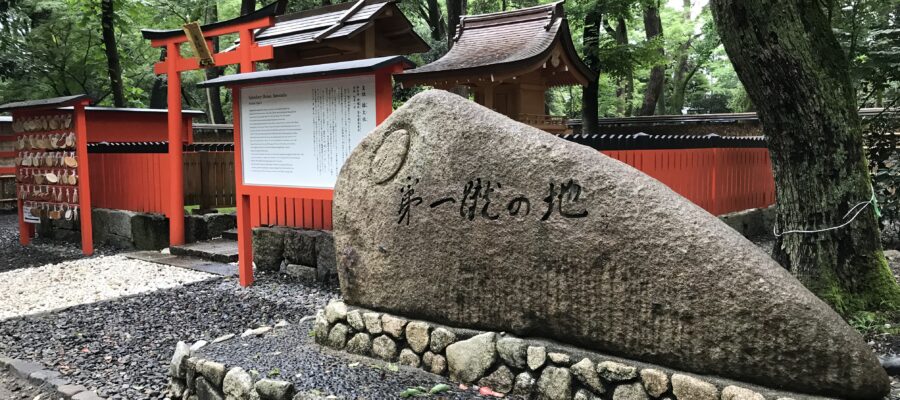真新しいお社を発見
下賀茂神社の糺の森を歩いていると、新しいお社が目につきました。何かなと思って近づいてみると、ラグビーとゆかりの深い神社が建っています。お祀りされているのは、神魂命(かんたまのみこと)と賀茂建角身命(かもたけつぬみのみこと)で、名称は雑太社(さわたしゃ)といいます。
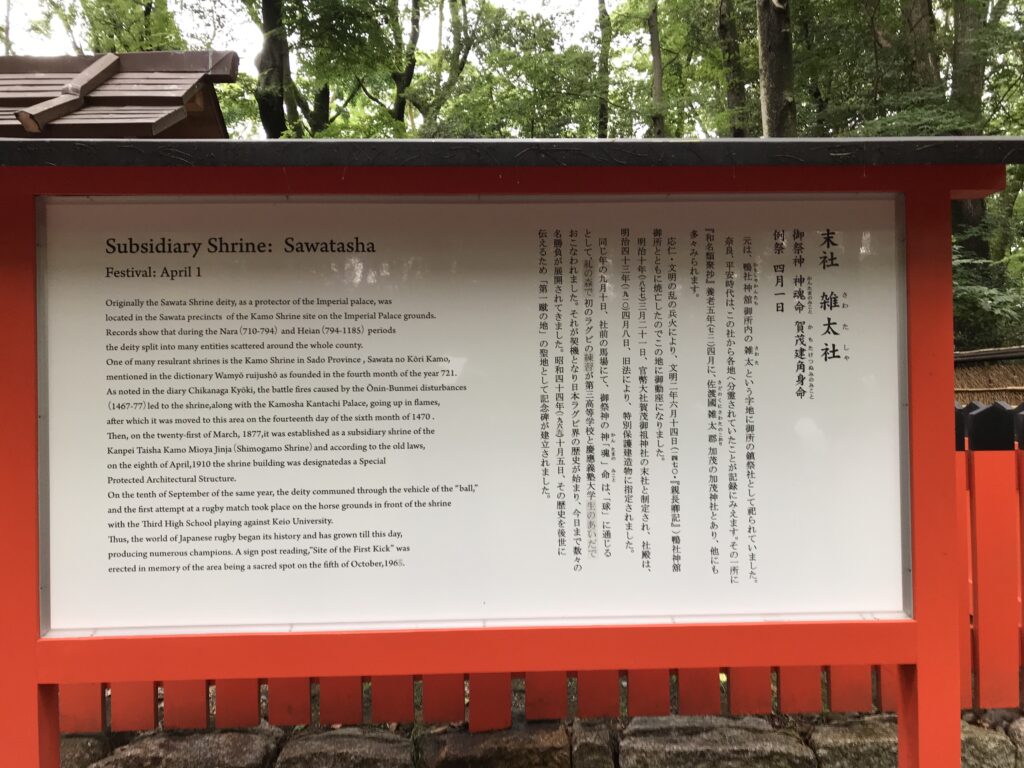
ラグビー発祥の地
1910年9月10日、旧制第三高等学校と慶応義塾の学生により、この馬場にて関西で初めてラグビーボールが蹴られたそうです。これが契機となり、日本ラグビー界の歴史が始まり、今日まで数々の名勝負が展開されてきたのです。
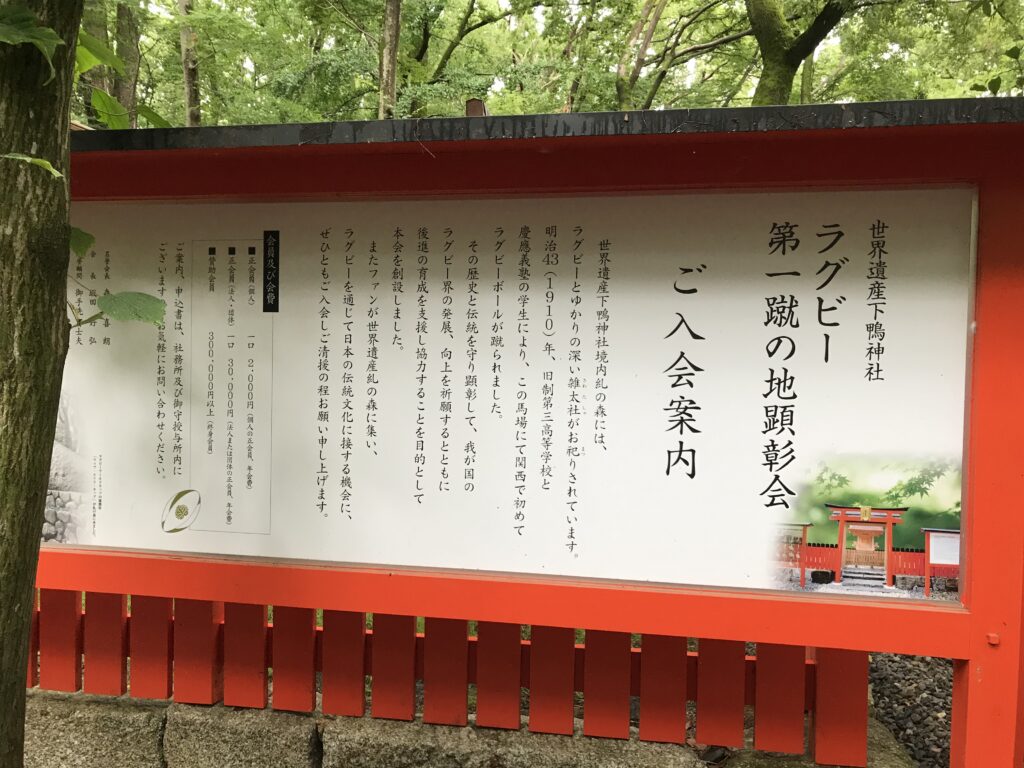
御祭神の神「魂」命は、「球」に通じるとして、この地が選ばれ、学生たちの練習が行われたと伝わっています。神様も、名前の響きで選ばれているというのは、日本あるいは神道独自の文化なのかと思えてきます。
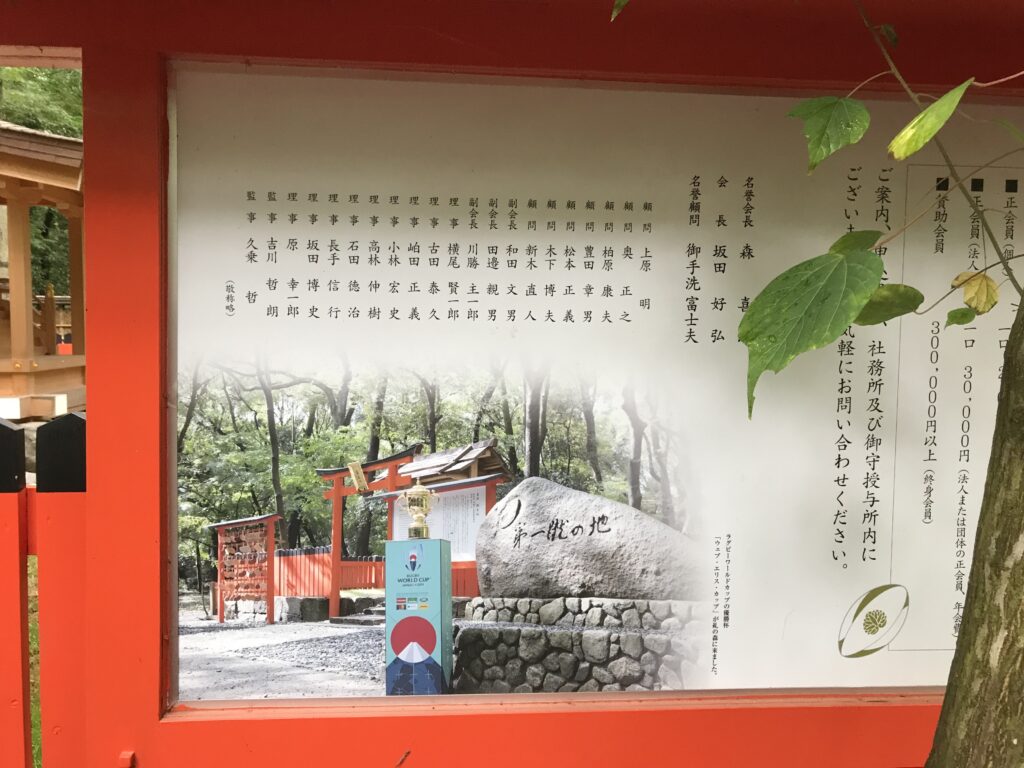
ラグビーボールを彫った記念碑
1969年に、その歴史を後世に伝えるため、「第一蹴の地」の聖地として記念碑が建てられました。記念碑をよく見ると、石の左上にラグビーボールらしきものが彫られています。楕円形というよりも、なんだかくたびれた形の彫り物なので、一目見ただけではラグビーボールには見えないかもしれません。
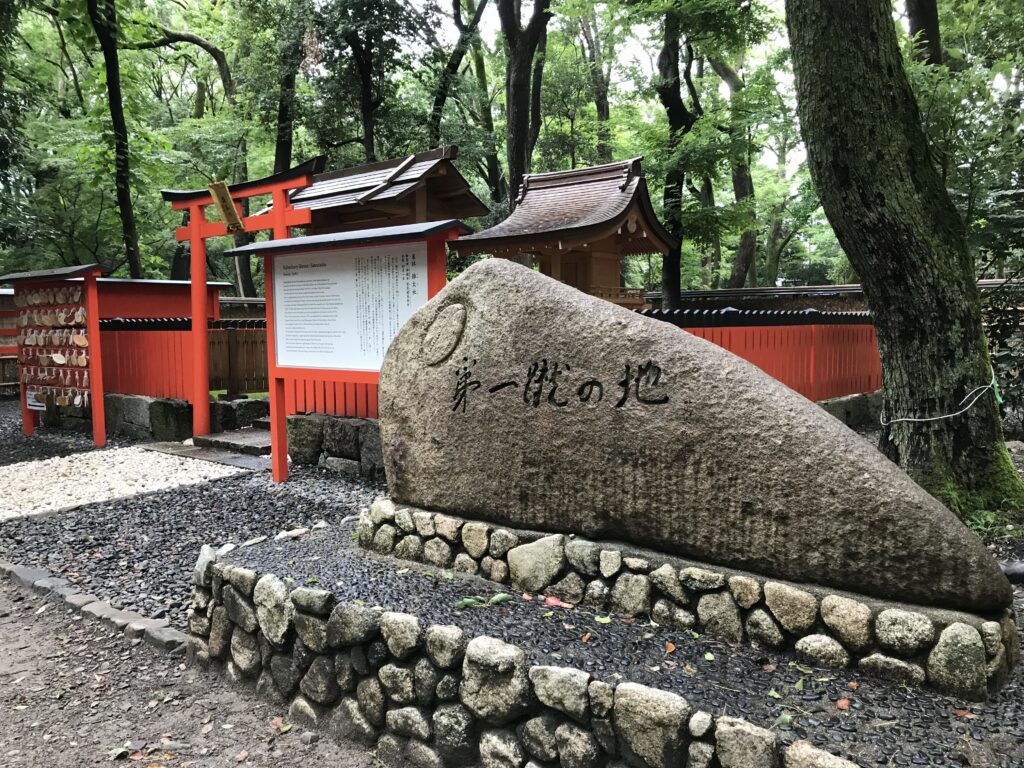
この雑太社は、鴨社神舘(かんたち)御所内の雑太(さわた)という字地に祀られていたそうで、その後、応仁・文明の乱の兵火により焼失し、この地に移って来られました。まさか、見たことも聞いたこともないラグビーの神様になるとは、神様自身、考えたこともなかったでしょう。(完)
京都のお土産
ラグビー神社がある下賀茂神社は、みたらし団子の発祥の地と言われます。最近は団子の中に甘い蜜が入ったみたらし団子がありますが、お土産、お取り寄せには最適です。

価格:3,300円
(2021/11/27 17:53時点)
感想(5件)
Rugby Shrine (Sawatasha)
While walking through the Tadasunomori forest of Shimogamo Shrine, I noticed a new shrine. As I approached the shrine, I found it to be a shrine with deep connections to rugby. The two deities enshrined at the shrine are Kan-tama-no-mikoto and Kamotaketsunumi-no-mikoto, and the name of the shrine is called “Sawatasha.
On September 10, 1910, a rugby ball was kicked for the first time in Kansai by students of the former Daisan High School and Keio University. This was the beginning of the history of rugby in Japan, and many famous games have been played here to this day.
It is said that this site was chosen because the god of the shrine, “Tama” (soul) life, is connected to the word “ball,” and students practiced there. It seems to me that the fact that the gods are chosen based on the sound of their names may be a culture unique to Japan or Shintoism.
In 1969, a monument was erected to commemorate the site of the “first kick” as a sacred place to pass on its history to future generations. If you look closely at the monument, you will see what appears to be a rugby ball carved into the upper left corner of the stone. At first glance, it may not look like a rugby ball, as the carving is somewhat tired rather than oval-shaped.
It is said that this Sawatasha was once enshrined in the character place called Sawata in the Kamosha Kantachi Gosho, but was later destroyed by fire during the Onin and Bunmei wars, and was moved to this location. He never thought that he would become a god of rugby, which he had never seen or heard of. (End)
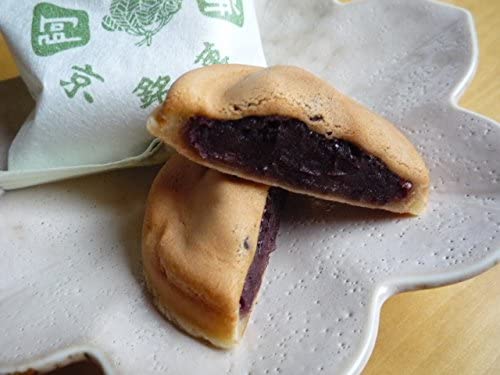
新品価格
¥4,845から
(2022/4/23 16:25時点)
Sanctuaire du rugby (Sawatasha)
En me promenant dans la forêt de Tadasunomori du sanctuaire de Shimogamo, j’ai remarqué un nouveau sanctuaire. En m’approchant, j’ai découvert qu’il s’agissait d’un sanctuaire profondément lié au rugby. Les deux divinités consacrées au sanctuaire sont Kan-tama-no-mikoto et Kamotaketsunumi-no-mikoto, et le nom du sanctuaire est appelé “Sawatasha”.
Le 10 septembre 1910, un ballon de rugby a été frappé pour la première fois dans le Kansai par des étudiants de l’ancien lycée Daisan et de l’université Keio. Ce fut le début de l’histoire du rugby au Japon, et de nombreux matchs célèbres ont été joués ici jusqu’à ce jour.
On dit que ce site a été choisi parce que le dieu du sanctuaire, “Tama” (âme) vie, est lié au mot “ballon”, et les étudiants s’y sont entraînés. Il me semble que le fait que les dieux soient choisis en fonction de la consonance de leur nom est peut-être une culture propre au Japon ou au shintoïsme.
En 1969, un monument a été érigé pour commémorer le site du “premier coup de pied” comme un lieu sacré pour transmettre son histoire aux générations futures. Si vous regardez attentivement le monument, vous verrez ce qui semble être un ballon de rugby gravé dans le coin supérieur gauche de la pierre. À première vue, cela peut ne pas ressembler à un ballon de rugby, car la sculpture est plutôt fatiguée qu’ovale.
On dit que ce Sawatasha était autrefois enchâssé dans le lieu de caractère appelé Sawata dans le Kamosha Kantachi Gosho, mais qu’il a ensuite été détruit par un incendie pendant les guerres Onin et Bunmei, et a été déplacé à cet endroit. Il n’avait jamais pensé qu’il deviendrait un dieu du rugby, qu’il n’avait jamais vu ni entendu. (Fin)
